This is why the York to Beverley railway line could not re-open using its original route
The York to Beverley line linked the two historic settlements until it was deemed uneconomical to run and closed as part of the Beeching cuts in 1965.
Some of the smaller stations opened back in 1865 were so under-used that ticket receipts barely covered the stationmaster's wages, and by the time of closure only six of the original 13 stops were still operational.
Advertisement
Hide AdAdvertisement
Hide AdIts mothballing left the larger towns along the way - namely Market Weighton and Pocklington - completely without rail links, and a useful second path between York and Hull disappeared. Commuters and agricultural produce took to the roads instead.
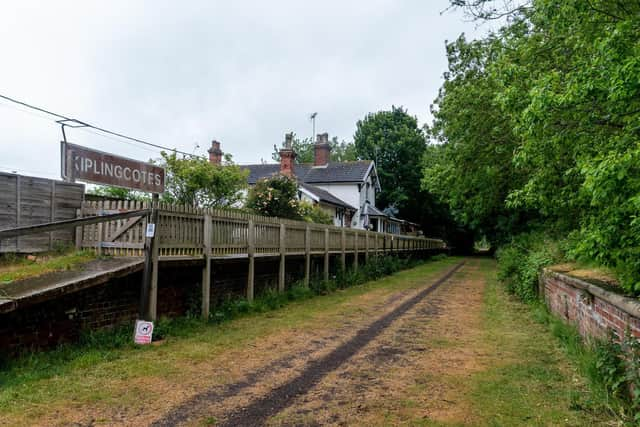

Now the route is back on the agenda after the announcement that Beverley's MP Graham Stuart and the Minsters Rail Campaign have formally submitted an application to be considered for government funding to re-open old lines closed during the Beeching axe period. If granted, the cash would be used to commission a feasibility study into the project, which would consider issues such as passenger and freight demand, profitability, building cost, and, crucially, the actual route the reinstated line would take.
It is naive to think that the evocatively-named Minsters Line could simply be relaid along its original path, which can still be determined from earthworks and field boundaries, as well as a listed viaduct over the River Derwent - as is the case for many routes closed 50 years ago that their supporters dream of reviving. It is even less likely that the old stations could be re-opened in their Victorian locations using the same buildings, as many have been demolished or converted for other uses.
The new Minsters Line, if the vision of transport campaigners in Beverley is ever realised, would not adhere to the 19th-century considerations of railway building, which saw one station provided for a local aristocrat as a sweetener to allow the tracks to cross his land and another built on the country estate of George Hudson, the famous railway king of the era. These stations never attracted large passenger numbers, other than well-heeled guests bound for shooting parties, or more than a few wagons of locally-grown potatoes sent to market. Nowadays, building new stations in villages such as Kiplingcotes, Londesborough and Nunburnholme, serving little more than isolated farms, would be not make the line profitable.
Advertisement
Hide AdAdvertisement
Hide AdStations on the outskirts of York have more potential - trains called at Earswick, Warthill, Holtby and Stamford Bridge, now popular with commuters. Market Weighton and Pocklington residents would surely make use of a line after being cut off from the network for half a century.
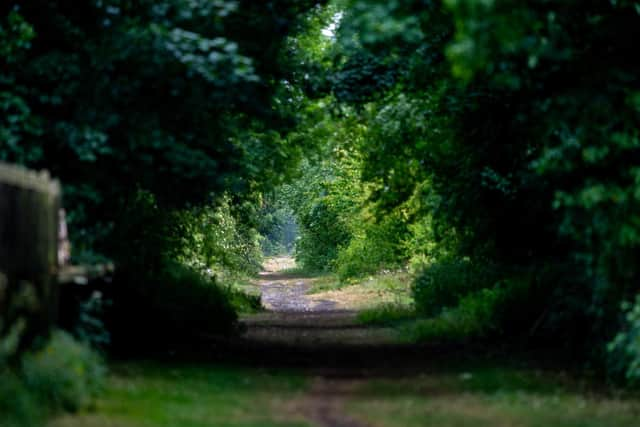

So, if the line was built again, a new alignment would have to be found to take into account modern development over the original trackbed. The section between Market Weighton and Beverley has also become the Hudson Way cycle path, and whether to preserve it would pose a dilemma for sustainable transport champions.
What were the original stations and how many remain?
In 1865, when the full length of the route became accessible, there were 13 stations.
Earswick served the villages of Huntington and New Earswick, where today demand from York commuters would be high. It closed with the line in 1965, and was demolished, a pub called the Flag and Whistle later being built on the site.
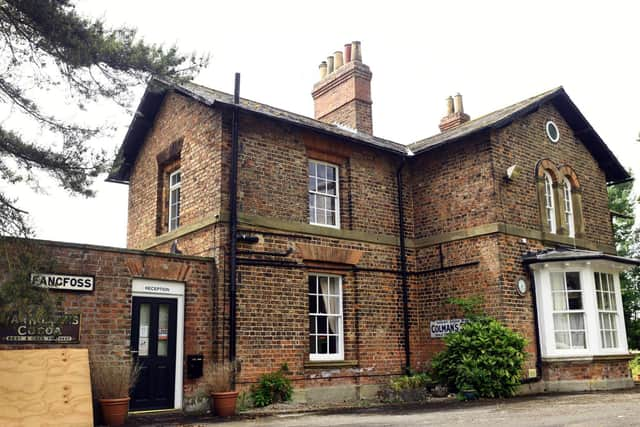

Advertisement
Hide AdAdvertisement
Hide AdWarthill served Stockton-on-the-Forest and Warthill, and despite its stature was the first station in the UK to have its manual level crossing gates replaced by boom barriers. It was an earlier casualty, closing in 1959, and it is now a private house.
Holtby, which also served Gate Helmsley, was mothballed in 1939, and goods services stopped in 1951. It's now a coal merchant's premises, and the signal box and gatekeeper's cottages are private houses, with some railway features still visible.
Stamford Bridge survived until the end of the line, and it has been well-preserved and is in community use. The buildings were taken over as a private social club for the village, with a bar, function room and lounge. The goods shed is a sports hall and one of the old bay platforms is a car park.
Yapham Gate was the shortest-lived of all the line's stations, opening when the first section to Market Weighton was laid in 1847 but closing in 1865 by the time the rest of the route was running.
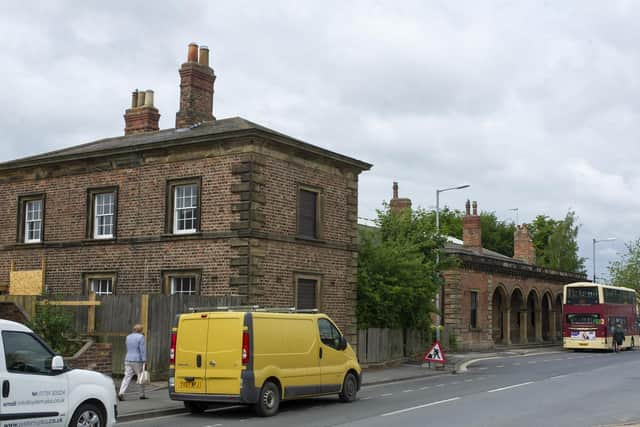

Advertisement
Hide AdAdvertisement
Hide AdFangfoss closed in 1959, but the station building is now listed. It is part of a caravan park which occupies the site, and is home to the offices and a shop.
Pocklington was a much-lamented loss, but the distinctive train shed is listed and now owned by Pocklington School, who use it as a sports hall. The front entrance area is now part of the bus station, the station house is a private home and the goods shed is a Travis Perkins depot.
Nunburnholme served a small community and closed in 1951. It's now a private house.
Londesborough Park was the little-used private station provided for George Hudson, who bought the estate as his country retreat, and has been demolished.
Advertisement
Hide AdAdvertisement
Hide AdLondesborough village also had a station, shared with Shiptonthorpe, and this shut in 1965. It's now a private house.
Market Weighton was demolished in 1979.
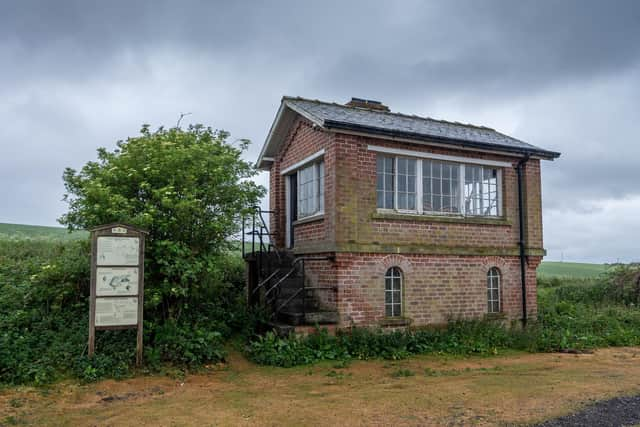

Kiplingcotes is probably the line's best relic - the buildings have been beautifully preserved, and it was this halt that was built for the convenience of Lord Hotham of nearby Dalton Hall, who was persuaded to release land to the railway. The anomaly of building a station in such a remote spot is explained by the need for discretion for guests travelling to Dalton Hall and Londesborough Park - some of whom were members of the Royal Family, and the quiet setting was preferable to alighting at a large public station. The buildings are beside the Hudson Way and there's a visitor centre for cyclists in the signal box, while a furniture shop also occupies the old goods shed. The platforms are still there. It was once a tearoom owned by the woman who had run the refreshment rooms at Market Weighton Station.
Cherry Burton closed in 1959 and is now a private house, with some of the platform remaining.
Where would new stations be?
At the time of closure, the York to Beverley line cost over £107,000 to operate but was only bringing in around £90,000 in revenue. This was partly because many of the passengers were travelling between York and Hull on a duplicate route, and did not use the intermediate stations. Some, such as Kiplingcotes, had a tiny catchment area - the latter's being only around 100 people.
Advertisement
Hide AdAdvertisement
Hide AdNowadays, the criteria for station provision would be completely different. Victorian lines were built for the convenience of those on foot, and ran directly into town centres. They were also sited with goods traffic in mind, much of it produce from farms. And of course, wealthy landowners had a stake in the process and the building of 'vanity' stations near to their country houses.
New stations along the Minsters Line would better serve the modern passenger by operating as railheads on the outskirts of towns and villages, with extensive park and ride facilities for commuters driving from their homes to catch the train into York or Beverley.
This is the aim of the Minsters Rail Campaign, whose members have identified new locations for stations that reflect current needs.
Much of the former trackbed still exists, but development has taken place over sections in Pocklington, Stamford Bridge and York.
Advertisement
Hide AdAdvertisement
Hide AdThe Minsters Rail Campaign members want the new route to leave the York to Scarborough line at Haxby, with a re-opened station that could serve both lines. The new station at Stamford Bridge could be sited on the A166 at the edge of the village, and in Pocklington a site off Hodsow Lane has been identified as the old station has been redeveloped. It would be convenient for access from the A1079 and a park and ride could be built alongside it.
In Market Weighton, the old station on Londesborough Road has been built over so three new locations have been suggested, including west of Londesborough Road, Clay Lane or Goodmanham Road.
The new alignment would skirt around towns rather than passing through the middle of them. Information published by the office and Beverley and Holderness MP Graham Stuart has asserted that some of the track would be laid on 'reclaimed farmland' and mostly follow the original route, with some necessary diversions around new housebuilding. Much of the land is in local authority ownership, so acquiring it would not be difficult.
Smaller, inefficient stations would be omitted - the likes of Kiplingcotes would not be able to support a train service today. The focus would be on the main population growth areas of Market Weighton, Pocklington and Stamford Bridge, which have strong travel flows to York.
Who would benefit?
Advertisement
Hide AdAdvertisement
Hide AdSeveral MPs whose constituencies would benefit from the re-opening have added their weight to Graham Stuart's campaign, including Julian Sturdy and Rachael Maskell in York and Diana Johnson and David Davis in Hull, which would gain a new through route to York that would relieve overcrowding.
Mr Stuart said: “I’ve been a long-time supporter of bringing back the old Beverley-York line, which local groups like the Minsters Rail Campaign have been championing over the past few decades.
“According to the last census, about a quarter of working people who live in the East Riding travel to either Hull or York for work - all of whom would benefit from an alternative to crowded roads and sparse bus services. It would also add to the area’s green credentials by reducing emissions.”
There are thought to be 500,000 people living within the line's catchment area and it could also boost tourism in Beverley, which boasts numerous listed buildings but is more isolated from the main Yorkshire visitor trail.
Advertisement
Hide AdAdvertisement
Hide AdIt could also speed up journey times - currently the 38-mile trip takes two hours by bus.
There would likely be two trains an hour in each direction and a double track is planned.
"The time is now"
Hull-based transport campaigner Adam Fowler believes that with the government recognising the value of rail after decades of ignoring its potential, there is now a once-in-a-generation opportunity to reinstate the line. He also sees it as a far more cost-effective solution to the increasing traffic in the area - which has become an overspill for families priced out of York - than investment in road upgrades.
"This is not just about demand for through journeys between Hull and York - the stations in between are the make and break of this scheme. It's about demand - places in the middle of nowhere are never going to support a railway. But you've got Market Weighton, a dormitory town which has expanded since 1965, and Pocklington which is even more of a commuter town where house prices are lower than in York. These areas could massively benefit - they look towards York and the main road is heavily congested.
Advertisement
Hide AdAdvertisement
Hide Ad"Stamford Bridge is a sizeable village now and in all of these areas the forecast is for more housing growth in the next five years. They are mushrooming and all the new development looks to York. This decision shouldn't be about emotion, it should be about practicalities - growing the economy and reducing congestion."
Adam believes a line would have a transformative effect on local travel habits, reducing car use and encouraging short rail journeys for work, education and leisure purposes.
He advocates restoring tracks along the Hudson Way cycle and footpath, arguing that the benefits of a railway would outweigh the loss of the trail, which is used mainly for leisure.
"There could be a compromise, perhaps paths could be retained alongside the line. But this is very much a leisure track for dog walkers and people cycling short distances. A line would remove thousands of cars from the roads."
Advertisement
Hide AdAdvertisement
Hide Ad"In Pocklington, you could deviate the route around the outskirts of the town across the old airfield, and have a strategically placed station with a park and ride. In Stamford Bridge you would have to divert it around missing sections, but the old viaduct could possibly be restored.
"This is the railway line that nearly didn't close, it was a borderline decision and with the foresight we have now about the growth of the towns it would never have been shut. If we don't do this, we'll end up having to build a motorway instead.
"It is deliverable - the trackbed is still there, there is a consensus from all the MPs and councils, they are all on board. It could also showcase the rural beauty of the East Riding. The time to do this is now, or it will be a missed opportunity."